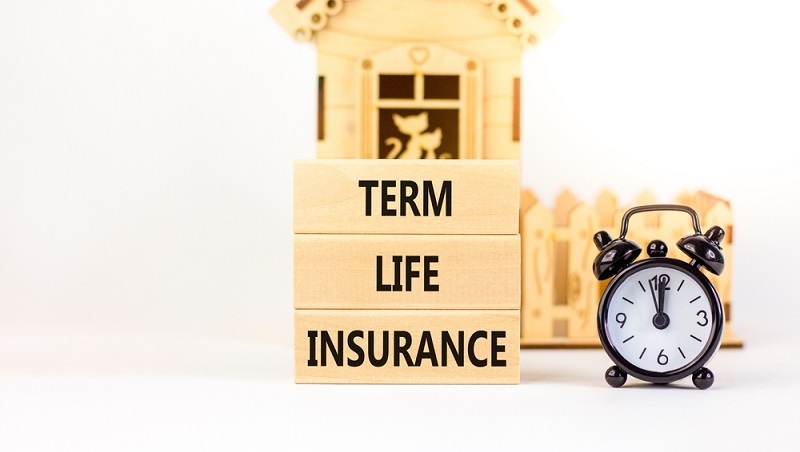
Picking the best life insurance types to choose from can be daunting, particularly when you're seeking the best possible financial choice for your family's future. Regardless of what you're trying to determine about term life insurance versus whole life, looking for the best types of life insurance for seniors, or figuring out how types of convertible life insurance work, it's good to familiarize yourself with the fundamental product benefits of each policy.
In this comprehensive guide, we're going to educate you on the differences between term, whole, and universal life insurance. You will see how each policy works, who it is best for, and why some life insurance policies with living benefits are growing more popular. By the end, you'll have a good basis to make an informed choice about your insurance protection.
Life insurance is not one size fits all. Each type of life insurance has different structures, benefits, and payment features. Your age, health, income, and financial goals will all determine what life insurance policy is most beneficial for you.
Some policies provide a death benefit only, while others may provide cash value, variable premiums, or convertibility.. Knowing the types of life insurance available serves you:

When discussing term life insurance vs whole life insurance, the differences have to do with price, length, and value.
Term life insurance is considered short-term insurance, meaning insurance for a certain number of years, such as 10, 20, or 30 years. Term life insurance is popular because it is generally the least expensive and does not have convoluted forms and rules.
Key features:
Advantages:
Disadvantages:
Whole life insurance is permanent coverage that lasts your entire life, and the face amount is guaranteed income tax-free to your beneficiaries.. It has a death benefit and a cash value component that accumulates over time.
Key features:
Pros:
Cons:
Knowing term life insurance vs whole life clarifies your short-term vs long-term requirements and how much you're ready to spend on insurance.
Universal life insurance is an adaptable permanent policy with both a death benefit and a cash value aspect, but with adjustable premiums and face amount.
Guaranteed Universal Life (GUL):
Indexed Universal Life (IUL):
Variable Universal Life (VUL):
Universal life insurance types' advantages include the fact that the premiums and coverage levels can be changed, thus the flexibility is one of the best life insurance types available. It's especially useful for those with fluctuating financial requirements or income.
If you can't commit to a permanent policy, convertible life insurance categories provide an intelligent starting point.
With a convertible term policy, you can convert to a permanent policy—such as whole or universal life—without undergoing new medical underwriting.
Why it's helpful:
You’re starting with term life insurance due to affordability, but you may want to convert later to enjoy life insurance types with living benefits such as cash value or policy loans.
This hybrid approach combines immediate protection with long-term potential, particularly attractive to individuals anticipating future financial stability or family planning.
As individuals grow older, life insurance requirements change. The best life insurance for seniors will vary depending on their health, retirement assets, and estate planning goals. Good options for seniors include:
Guaranteed Issue Whole Life:
Simplified Issue Whole Life:
Universal Life for Estate Planning:
Best life insurance for seniors gives seniors peace of mind, knowing their medical expenses, funeral costs, and inheritance planning costs will all be covered. They typically have life insurance products with living benefits; an example is accessing the death benefit during terminal illness.
Now, life insurance products do not just focus on what happens after you die. Living benefits life insurance products allow you to access your policy funds while you are alive - providing further value to you with each day you live.
These options make your policy a financial safety net for sickness, emergency bills, or retirement planning. Both seniors and younger contract holders who lean toward insurance enjoy these products due to their immediate benefits.
Not all life insurance products are equal, and you should base your decision on your financial goals, any dependents you might have, and your attitude to risk.
An experienced insurance advisor can assist in matching you with the types of life insurance best fitting your profile and objectives.
Various types of life insurance have various benefits.
Term insurance, for example, lasts for 10 to 30 years, has no cash value, and is very affordable (a great option for temporary needs). Whole Life insurance provides lifetime insurance and has guaranteed cash value, but it comes with higher premiums (which is great for long-term security).
Universal Life provides lifetime insurance with flexible premiums and cash value that can grow (great for people looking for investment possibilities). A Convertible policy can begin as a Term policy but later can be converted to a Whole or Universal Life (a good policy for younger, low budget consumers). Lastly, there are guaranteed issue policies which provide lifetime insurance, no cash value, and can be issued without a medical exam (a terrific policy for older persons and/or people with health issues).
Choose term life insurance for 20-30 years to protect against lost income duration until kids are adults.
Select senior life insurance, specifically guaranteed issue or simplified whole life insurance, as the best choice to cover funeral expenses and leave a little bit of legacy. SDFG
Purchase benefits with universal life insurance types to accumulate a cash value and save for retirement.
Consider convertible life insurance types to start off with term life and then convert to permanent life insurance as the business expands.
Mastering the range of life insurance types—from term life vs whole life, to convertible life types explained, and discovering universal life types benefits—is key to safeguarding your financial future. Each serves a different function, so there is no one-size-fits-all approach.
Take time to consider your needs, shop life insurance with living benefits, and seek the advice of a trusted counselor to find the right policy. Regardless of whether you're a child just beginning your life or a retired grandparent who is creating a legacy, there is a plan that works for you that will bring you peace of mind and security.
This content was created by AI